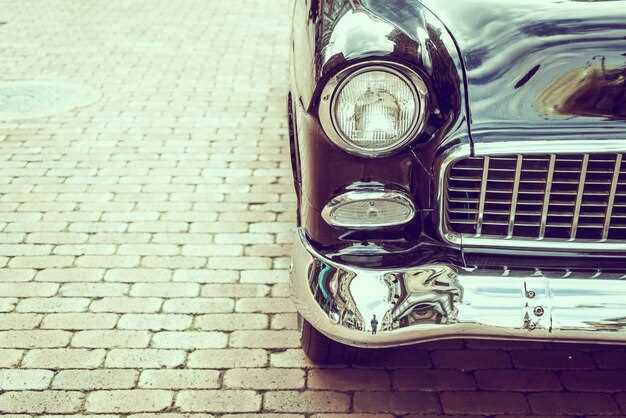
The automotive market presents a complex landscape of value dynamics, particularly evident in the realm of luxury vehicles. Among these, Porsche models stand out as icons of performance and engineering excellence. Understanding the value trends associated with these vehicles is essential for both enthusiasts and investors alike.
Porsche has cultivated a strong brand reputation, which significantly influences pricing and market demand. As with any automobile, the trajectories of depreciation and appreciation are not uniform. Certain models, such as the Porsche 911, have demonstrated remarkable resilience against depreciation, often appreciating in value over time. This phenomenon raises intriguing questions about the factors that drive value and how prospective buyers can make informed decisions in the ever-evolving automotive marketplace.
By examining historical trends, market fluctuations, and the overall desirability of specific Porsche models, one can glean insights into how to navigate the competitive landscape of luxury vehicle ownership. This article aims to explore these aspects, providing a comprehensive overview of the critical elements that impact value, ultimately guiding enthusiasts and investors toward making prudent choices in their automotive pursuits.
Understanding Depreciation Rates of Different Porsche Models

The depreciation rates of Porsche models can vary significantly based on several factors, including model popularity, production volume, and market demand. Certain models, such as the Porsche 911, tend to retain their value exceptionally well due to their iconic status and strong enthusiast following. These vehicles often experience slower depreciation compared to more common models like the Porsche Macan, which may have a higher initial depreciation rate due to larger production numbers and broader market competition.
Luxury performance vehicles typically see a steep initial depreciation in the first few years, after which the rate stabilizes. For instance, the first three years of ownership may witness up to 30% value loss, but this can decrease to around 10% for later years. Factors such as mileage, condition, and service history significantly influence the resale value, making maintenance critical for preserving a Porsche’s worth.
Additionally, limited-edition models often appreciate over time, creating a unique investment opportunity. The rarity of certain editions, combined with their desirability, can lead to a value increase. Trends in the collector market reveal that models like the Porsche 911 Turbo and classic air-cooled 911 variants have gained notable appreciation, showcasing that specific segments within the Porsche lineup can buck general depreciation trends.
Understanding these value trends is essential for both current Porsche owners and potential buyers. It provides insights into potential future investment value and helps in making informed decisions when purchasing or selling a Porsche model.
Analyzing Market Demand and Its Impact on Porsche Valuation

In the world of luxury automobiles, Porsche stands out not only for its engineering excellence but also for the unique trends affecting its market positioning and value. Understanding the dynamics of market demand is critical when analyzing Porsche models and their valuation over time.
The demand for Porsche vehicles fluctuates based on several factors, including economic conditions, consumer preferences, and the overall appeal of the brand. During periods of economic stability or growth, demand for high-performance vehicles like Porsche tends to increase. Enthusiasts view ownership as not just a transportation means but a lifestyle choice, contributing to higher resale pricing and potential appreciation in value.
Conversely, during economic downturns, the luxury car market often experiences a decline. Potential buyers become more cautious, impacting the demand for new and used Porsches alike. Consequently, models may depreciate more rapidly in challenging economic climates, resulting in a sensitive correlation between market demand and vehicle pricing.
Another crucial aspect influencing demand is the limited production runs of certain Porsche models. Exclusive editions often see heightened interest, driving up their valuation as collectors and enthusiasts prioritize these vehicles. This phenomenon illustrates how scarcity can elevate a vehicle’s worth, substantially diverging from mass-produced models.
Technological advancements and shifts in consumer preferences towards sustainability are also reshaping market demand. As electric and hybrid vehicles gain traction, Porsche’s investment in models like the Taycan signals a response to changing buyer interests, thereby affecting future valuation trends and pricing strategies.
In summary, analyzing market demand plays an essential role in understanding Porsche valuation. Whether through economic factors, brand exclusivity, or evolving automotive trends, the interplay of these elements leads to significant variations in vehicle value and pricing strategies over time.
Identifying Potential Appreciation Factors for Classic Porsche Models
Classic Porsches have garnered significant attention from collectors and investors, with certain models experiencing substantial appreciation in value over the years. Understanding the factors that contribute to this upward pricing trend is essential for anyone looking to invest in these iconic vehicles.
- Rarity: Limited production runs increase desirability. Models like the Porsche 904 or various 911 variants that were produced in fewer numbers tend to hold their value better and can appreciate significantly over time.
- Condition: The overall condition of a vehicle, including its mechanical integrity and aesthetic appeal, impacts its market value. Well-restored or preserved classic Porsches often command higher prices.
- Provenance: A documented history of ownership can greatly influence value. Cars with notable previous owners or those featured in significant events often see appreciation due to their unique stories.
- Originality: Vehicles that retain their original parts and specifications are more attractive to collectors. Modifications can decrease a car’s value, while originality can enhance it.
- Market Demand: The general interest in classic cars fluctuates based on trends, economic conditions, and consumer preferences. High demand for certain models can lead to rapid price appreciation.
- Performance and Engineering: Porsches known for their engineering excellence or racing pedigree, such as the 911 Turbo or the GT3, often maintain and increase their value due to their performance attributes.
In summary, potential appreciation factors for classic Porsche models include their rarity, condition, provenance, originality, market demand, and performance capabilities. Investors should consider these elements carefully when evaluating the value of a classic Porsche, as they provide insight into future pricing trends.
 Skip to content
Skip to content





